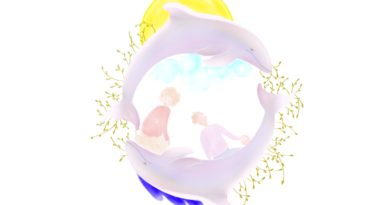Sustainability and Equality
Using public transport in conjunction with reducing the number of cars we own is a measure that leads both to a less polluted environment and to more social equality.
Because our society is based on a never-ending spiral of consumption, it is no wonder that the solution offered against the pollution created by transportation is a consumer product: electric cars. It has been proved that this new technology has its benefits, but let’s take a step back and look at the whole picture.
Any product-based solution has an environmental impact and raises the problem of inequality; therefore, this approach is seldom, if ever, effective.
Firstly, let’s take into account that the materials which consumer products are made of are extracted from the earth. These extractions of natural resources have negative repercussions for the environment: we pollute and use energy in this process. We can mitigate these repercussions by extracting fewer of Earth’s resources, and when we must do so, by doing it carefully and respectfully.
Secondly, industrial produce is often toxic or not easily degradable, and when not useful anymore, it produces a lot of waste if not recycled, but recycling itself also uses energy and is not always an answer.
Thirdly, more ownership of cars, even if they are electric cars, means more kilometres of roads, as well as wider ones.
Yes, our consumer-based society is unsustainable, and we need to start being far more careful about using natural resources. From this perspective, the most sustainable ways to move around are, first, walking or cycling and second, using public transport. I have also mentioned equality when referring to public transport. The creation of an efficient and sustainable public transport system brings equal opportunities of sustainable transportation to all citizens. Not everyone can afford an electric car. Not everyone can drive. Not everyone wants to have a car. For those of us living in Switzerland, using public transport is such an easy option. All cities, towns and villages are connected by very good train, tram and bus networks, and there are several discounts on offer – check them out! For example, with parents, children up to the age of 6 travel free, and up to 16 years old only cost 30 CHF per year with the Family Card. I dare say it is 100% possible to live without a car here in Switzerland (unless you live in an isolated area of the Alps). I have already met people who travel daily on public transport, and when a car is needed for special occasions (like having to do a big shop), they rent a car. Have you heard of Mobility Carsharing? It is a Swiss cooperative that offers solutions for people who don’t want to buy a car or a motorbike but might need one from time to time, or even on a more regular basis. It’s a great solution for the environmental crisis we are facing: less consumption, more sharing, and a longer life to the things we buy.
Recommended trip by public transport: Oeschinensee – the lake up in the mountains
Easily accessible all year round, Oeschinensee is astonishing. In winter you can walk on it (it freezes), and in summer you can swim in it. Located in a valley with several paths and trails for hiking and skiing, it is surrounded by waterfalls. You can reach the lake by foot or by cable car from Kandersteg village. It takes around 90 minutes to walk (a distance of 5 km), and it is a 10-minute journey with the gondola. Eating, sleeping and toilet services are available near the lake. Kandersteg is easy to reach via train (or car) from anywhere in the Bernese Oberland. Check it out!
By Sara Goti Jackson
Sara Goti Jackson works as a childhood and sexuality psychotherapist, she uses both movement and dance as an educational and therapeutic tool. She played everyday in the forest when growing up and nature still feels like home to her. She holds a Forest School Leader certificate. She lives in Seltisberg with her husband, two lively daughters and two loving cats, they all amaze her every day!
https://saragotijackson.wixsite.com/psychologyeducation
Illustration by Lemady Rochard
Lemady is a British artist and illustrator living near Einsiedeln. Her first illustrated book The Little Mermaid’s Son by Annahita de la Mare was published in December 2020 and is available on Amazon. She also runs Storycraft classes and parties for children at the Storycraft Studio in Rüschlikon, ZH. She has a background in theatre arts and children’s literature. More information & contact details on her website http://www.lemady.ch
Facebook: http://www.facebook.com/lemadyart
Instagram: http://www.instagram.com/lemady_art
Links:
https://www.mobility.ch/en/private-customers https://www.sbb.ch/en/travelcards-and-tickets/railpasses/junior-travelcard-children-co-travelcard.html https://holidaystoswitzerland.com/planning-a-day-trip-to-oeschinen-lake/



